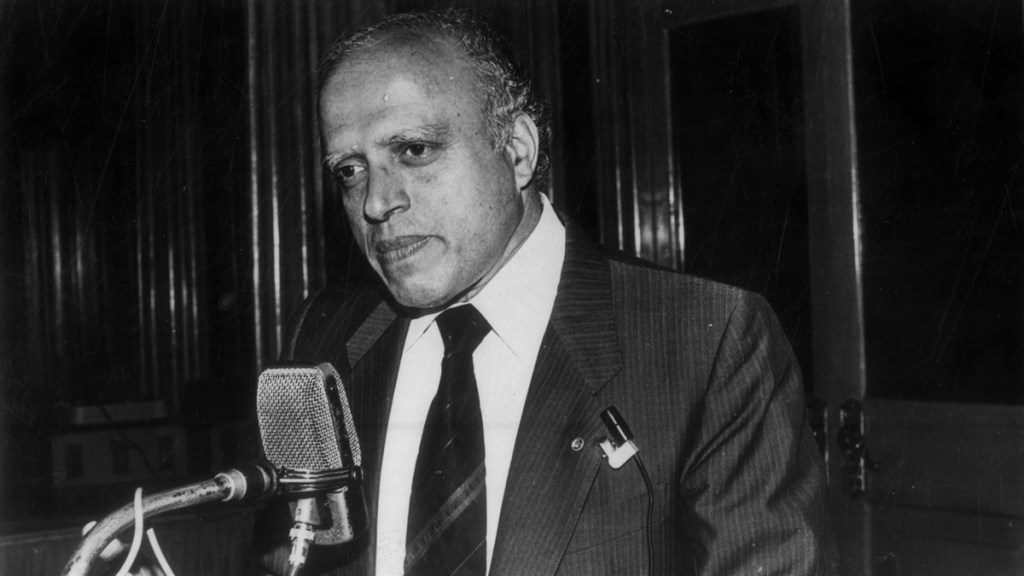M S Swaminathan is no more. But his legacy remains with every student and scientist of agriculture. He is most widely known for working with Norman Borlaug to usher in the Green Revolution in India in the mid-1960s when India was facing back-to-back droughts. Millions would have died of starvation if the country had not experienced the Green Revolution. India was already termed as a “ship to mouth” economy, as the country was importing 10 million tonnes from the US under P.L.480 scheme. And India had no foreign exchange to pay for it. I can recall the days when the then Prime Minister Lal Bahadur Shastri had given a call to the nation to “skip a meal in a week”, and how wheat chapatis and wheat products would not be served at wedding parties.
It was at that time, that Swaminathan worked hard to convince our political leadership to import 18,000 tonnes of seeds of high-yielding dwarf wheat varieties, Lerma Rojo and Sonora-64, from Mexico. This was the biggest seed shipment in history at that time. The seeds had to be indigenised to local conditions. With Kalyan Sona and Sonalika, the new indigenised wheat varieties, India changed its agriculture paradigm under Swaminathan’s leadership. It was so inspiring that many people in the country, including me, named their children after these wheat varieties.
His contribution had a far-reaching impact. India experienced a wheat and rice revolution. This gave the country much-needed respite and confidence to turn the tables on food security in a short time. Who could believe that one day India will emerge as a significant exporter of cereals. In the last three years, 2020-21 to 2022-23, India exported 85 million tonnes of cereals contributing to global food security. Forty per cent of global rice exports come from India. The seeds of this transformation were sown by Swaminathan and his team of Indian agri-scientists, working closely with Norman Borlaug. They deserve all the credit and our gratitude.
It is well known that Swaminathan was a geneticist as well as an administrator. He headed the Indian Council of Agricultural Research (ICAR), and later became the Director General of the International Rice Research Institute in the Philippines. He was rightly awarded the first World Food Prize in 1987, which incidentally was set up by Norman Borlaug, who had received the Nobel Peace Prize, as there is no Nobel Prize for Agriculture. Borlaug then set up an institution to recognise contributions to agriculture – the World Food Prize is a product of his endeavours. No wonder, Swaminathan, who worked with him most closely was the first recipient of the World Food Prize. Swaminathan was also conferred the Padma Shri, Padma Bhushan and Padma Vibhushan for his outstanding contributions. He also received several other awards like the Shanti Swarup Bhatnagar Award, Lal Bahadur Shastri National Award and the Indira Gandhi Prize Listing them all here in this obituary is simply not possible.
I had the privilege of visiting him at his home and sharing the dais with him on several occasions. One thing was clear: Even in his late 80s, Swaminathan was brimming with energy and inspired students and scientists alike. Most of them would surround him for selfies! And, he was always generous and smiling. The last time I saw him was perhaps in Pune, when he was wheelchair-bound and giving a power-point presentation to Sharad Pawar and Venkaiah Naidu. One could see the fire in his belly and his passion for agriculture. He was a hero who could bring science and humanity together. With his demise, an era has come to an end.
I would be amiss if I didn’t mention the National Commission on Farmers (NCF) which he chaired and submitted five reports. His efforts to improve productivity and profitability in agriculture went beyond technology. One of NCF’s key recommendations was to have minimum support prices (MSP) for farmers based on the cost of production plus 50 per cent return. The right cost later became a matter with different governments. One view was interpreting it as the comprehensive cost, which includes not only out-of-pocket expenses of farmers (Cost A2) but also imputed wages of family labour (FL), imputed rent on owned land and imputed interest on owned capital. The UPA government did not accept that. The NDA government went halfway and accepted at least a 50 per cent return over Cost A2+FL. But we still hear that market prices do go below even that in many parts of the country at harvest time. The government does not have the wherewithal to ensure that all those commodities get MSP. But it’s also debatable to what extent the policy of restricting markets (export controls, stocking limit) for farmers is justified.
So, some dreams of Swaminathan remain unfulfilled – as with many of us. I am sure the younger generation would conduct more research not just in technologies to raise productivity but also on pricing policies to improve farmers’ profitability. The challenge is bigger with climate change and depleting natural resources. May Swaminathan’s inspiration guide us all.
(The writer is Distinguished Professor, Indian Council for Research on International Economic Relations)

